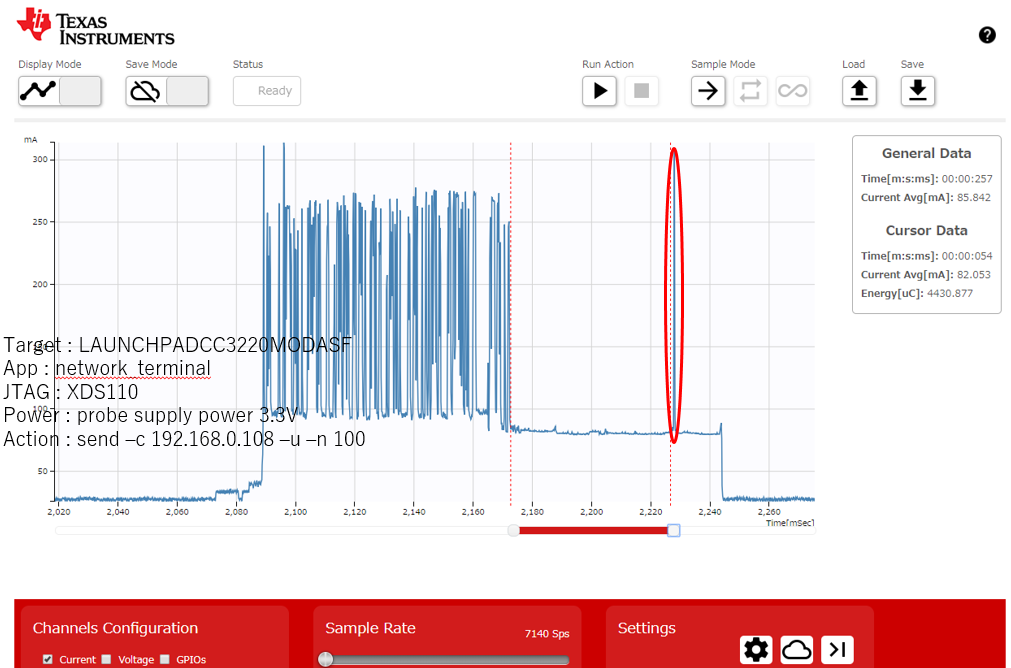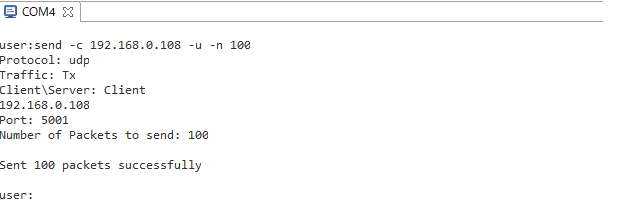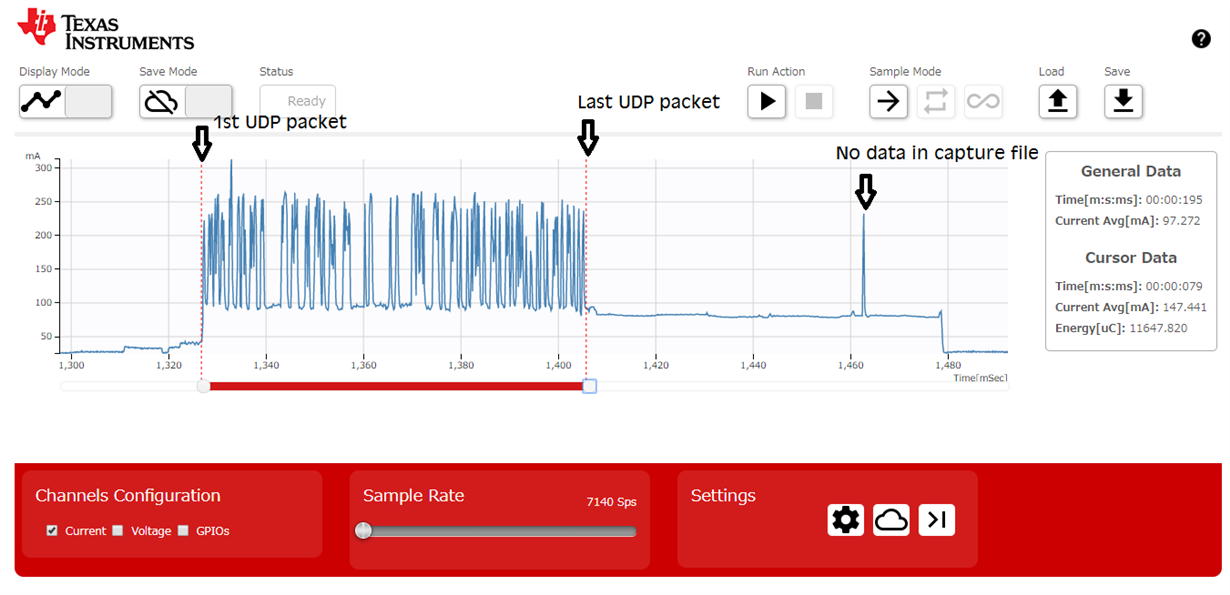Other Parts Discussed in Thread: CC3220SF
Hello,
The sample program sends 24KB TCP traffic every 0.16s using sl_Send API.
This figure is the current graph captured by ITEMER-BOOST.
(1) shows transmission the TCP traffic.
(2) After transmission completed, the module continues RX about 50ms.
(3) Then TX about 0.5ms.
(4) Finally, RX about 15ms.
(2)...(4) cause increase current consumption.
I have some questions.
What are (2)...(4)?
Why the NWP does not go back idle state immediately after (1)?
Target: CC3220MODSF custom board
SDK: simplelink_cc32xx_sdk_2_10_00_04
Best regards,
Nobuhiro







